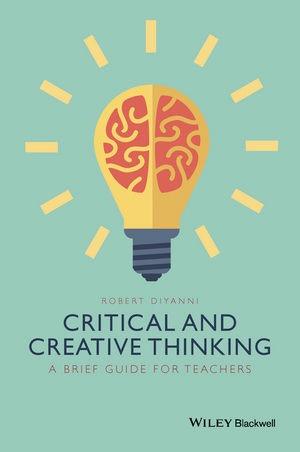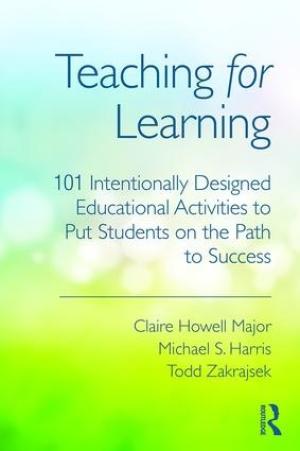Resources by Brett Hendrickson

As teachers in religious studies and theology departments, one of our principal pedagogical claims is that we teach students to think critically and creatively, but we are not always clear on what this means in practical terms. This readable book by Robert DiYanni helpfully gathers research and writing from a wide variety of disciplines to help teachers define and apply critical and creative thinking for themselves. The book’s organization makes sense as it leads the reader through concepts, practical concerns, and application. Brief “interchapters” unite the flow of the book around one master of critical and creative thinking, Leonardo da Vinci. Each chapter ends with a well-crafted list of writing prompts to help the reader – both teachers and students – to apply the chapter’s concepts. For example, chapter 4 focuses on strategies and applications of critical thinking, and so the end-of-chapter prompts call on the reader to analyze arguments, evaluate scenarios, and deploy specific critical thinking strategies. Chapter 5, which examines approaches to creative thinking, provides prompts that invite imagination, innovation, and inventive solutions to problems. Essentials of critical thinking such as asking questions, seeking clarification, gathering evidence, evaluation, and reflection are discussed at length with colorful examples from notable historical events and popular culture. For instance, one chapter features a collection of headlines and other snippets of news coverage of the murder of Kitty Genovese. DiYanni invites the reader to consider what sorts of inferences and judgments various news sources made in response to this famous case (71-74). Another section examines the methods that Sherlock Holmes used in his legendary detective work (109-112). DiYanni argues, however, that critical thinking is not sufficient by itself and can even be reductive and dangerous (xi) if it is not joined by robust creative thinking. He persuasively shows that creative thinking is a necessary adjunct to critical thinking and leads to innovation and whole-minded approaches to problems. DiYanni’s coverage of creative thinking likewise draws on a wealth of examples from creative people such as choreographer Twyla Tharp and checklist-innovator Atul Gawande. DiYanni’s book thoroughly covers critical and creative thinking, but it may not live up completely to its subtitle, A Brief Guide for Teachers. There is not much by way of specific advice to teachers on how to teach students to be more critical and creative thinkers. Rather, the book reads like a textbook for a class whose subject matter is creative thinking itself. As such, the exercises in the book would have to be adjusted for application to religious studies and theology courses. Another small critique is that DiYanni argues early in the book that cultural forms and social locations, including religion, are “blocks” to critical thinking (10). While we can agree that people’s contexts can limit and define their worldview, religion professors know that it is not particularly helpful to consider religion as a hamper to thoughtfulness. These criticisms aside, this book is a helpful addition to the literature on critical and creative thinking, and its focus on application – even if not explicitly linked to pedagogical advice – provides welcome tools to promote critical and creative thinking in ourselves and our students.

The authors of this extremely helpful book open with an observation that is often true: there is a lot of research on how to teach effectively, but “this information tends to be inaccessible to most instructors, as it has been published piecemeal in journals that instructors frequently do not read” (xi). To help remedy this lamentable situation, they have sifted through hundreds of studies in teaching and learning in order to compile a list of educational activities that both work in real world settings and are supported by research. In other words, if you have ever wondered what kinds of teaching actually lead to learning (retention, critical thinking skills, creative application), and you would like to do a better job of varying your pedagogical approaches, then this book will be of interest to you. Each of the eight chapters focus on a particular kind of teaching and learning format, including lecture, discussion, peer teaching, academic games, reading strategies, writing, graphic organizers, and metacognitive reflection. In clear prose, the authors explain the strengths and drawbacks of each kind of teaching as well as what researchers have found concerning each approach’s effectiveness. For example, lectures work better when instructors keep the lectures short, focused on essentials, and when accompanied with frequent quizzing and guides to effective note-taking. After establishing what works according to research, the authors provide detailed “Intentionally Designed Educational Activities” (IDEAs) to help instructors teach in a way that has been proven to lead to learning. Again, using lecture as an example, some of the suggested activities include guided note-taking, a “find the flaw” exercise, the Socratic seminar, and lecture bingo. The IDEAs, which are delightful and often fun, are cross-referenced with other teaching activities in the book and include helpful “pro-tips” to give additional guidance on implementation. This clear structure makes the book one that can be read cover-to-cover as well as a handy reference volume for specific classroom situations. Both seasoned and new teachers will get a lot out of this book. New instructors will find the help they need when trying to translate their graduate education into effective teaching. More seasoned teachers will find some tried-and-true methods confirmed but will also encounter new ideas to reinvigorate the classroom. While some of the 101 IDEAs in the book are clearly designed for mathematics or scientific fields, the vast majority are well-suited to humanities and social sciences and will be right at home in religious studies and theological departments at both undergraduate and graduate levels. This book has the potential to greatly improve our day-to-day teaching; our students will be grateful.